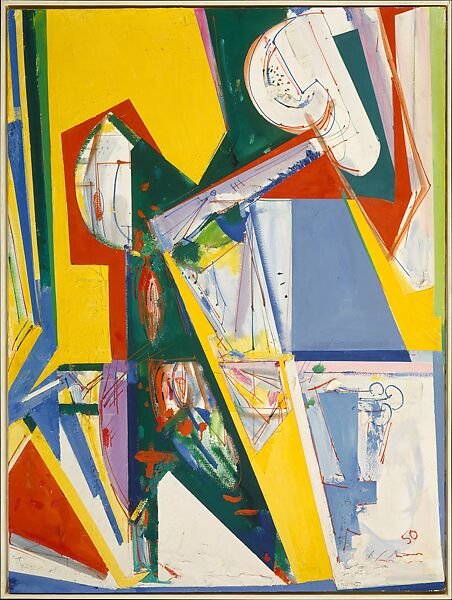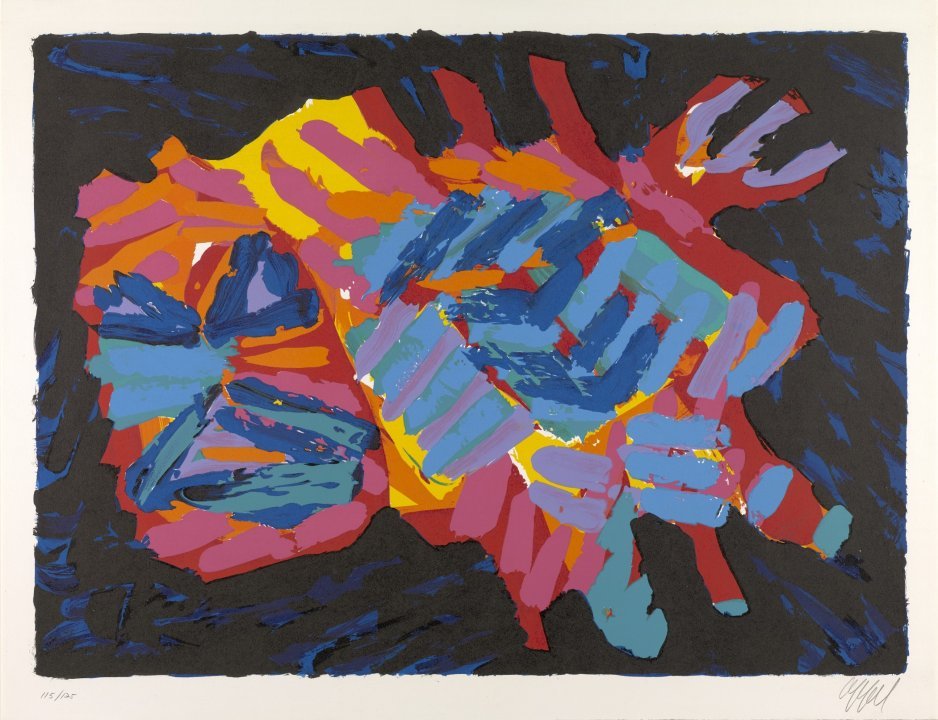How to Recognize Post-War Art in the Secondary Market Like an Aficionado
And a Quick Look into the Biggest Movements of the 19th Century
Karel Appel Animal et Fleurs — 1952With 10 out of the 15 highest valued artworks sold at auction in 2020 being from the 20th century, and 4 being extremely recognizable Post-War Artists to the trained eye, it is important to understand the popularity of these works and how they influence the entire art market.
Can you point out key visual elements in Modern and Postmodern art? What historical events caused the development of these hot-commodity art movements?
Let’s dive into the history of Post-War (yes, World War II) art movements, and show some selected works to help you recognize each distinct movement through your collection journey!
The History
It is no question that New York City is the center of the Western Art World, since “it has been the biggest for so long that the fact barely attracts comment.” (Morris, 2023). But it hasn’t always been this way, right?
The Renaissance, the most famous and recognizable Western art movement, happened in Europe, so what happened?
From the Renaissance (14th century) all the way through Cubism and Surrealism (up to the 1950’s), the spotlight was on Europe as the center of the Art World. Towards the end of this European reign, the hub had narrowed down to Paris because of its numerous prestigious art schools and fairs. This attracted a wide range of artists from Europe and around the world to move to Paris, ultimately making it the “ground zero” for evolving art movements. That is, until World War II began, and many artists and creatives fled Europe together. While Jewish people were the main target of the Nazi’s during World War II, they were not the only target. In fact anyone who made anti-Nazi media in any form was subject to imprisonment and encampment. Because of this, “About seven hundred European artists immigrated to the United States after Paris fell to the Germans, in 1940…” (Menand, 2017).
Charles Joseph Natoire - Life Class at The Academy of Painting and Sculpture - 1746The physical, geographical separation that America provided for artists that were spearheading the evolution of art in Europe gave them the Aw freedom from war-stricken land to develop some of the most sought-after art to come about in the 20th century: Modern and Postmodern Art.
What is Modern and Postmodern Art?
While the Modern and Postmodern art movements overlap in their active years, there are some slight differences in the dialectical ideas on the unconscious mind that the works of each movement were tackling.
Practically, Modern Art was inspired by Freudian (and similar) ideologies and started experimenting with how to portray these ideas in a 2D or 3D space, while Postmodern Art was based in Jungian (and similar) ideologies and questioned the purpose of portraying these ideas in 2D and 3D spaces. The difference in the philosophical groundwork can be simplified by saying:
“Freud paid close attention to human behavior and repressed emotions.
Conversely, Jung believed that the human psyche was more multifaceted.”(Monze, 2020).
Jackson Pollock Painting Process - 1949As the newly immigrated artists settled in downtown New York City neighborhoods, they established their own, new art schools where more experimentation and exploration of art, craft, mediums, and philosophies could flourish in the so-called land of the free. Because of this newly established and experimental hub for creatives, the evolution of art movements started formulating in New York.
Every western art movement since this moment of transition comes from, or is directly inspired by the New York City art scene. Beyond revolutionary artistic history, the visual elements of the art from this time seem to have resonated with people more than the old masters and realist works ever did as Post-War artists dug deeper into the human experience and unconscious, something that is objectively harder for realism to capture.
Let’s take a look at some of the different explorations and the unique qualities of each:
Abstract Expressionism — 1940’s-50’s
Hans Hofmann, The Window - 1950, Oil on CanvasNote:
Direct contact with canvas
Gestural mark-making
Portraying the unconscious
Art-making process is the art, more than the final product itself
Look at more Abstract Expressionist works here.
Pop Art — 1950’s-60’s
Richard Hamilton, Just What is It That Makes Yesterday’s Homes So Different, so Appealing? - 1956, collageNote:
References to pop culture (movies, moon landing, celebrities, tech, ads, etc.)
Logos and product placement
Hyperboles of sexualization
Themes of mass consumerism
Exact opposite of Abstract Expressionism
Look at more Pop Art here.
CoBrA (Copenhagen, Brussels, Amsterdam) — 1950’s
Karel Appel, Devil Cat (from the portfolio of Cats) 1978, Colour LithographNote:
Child-like art influence
Street art and graffiti influence
Directly criticizing seriousness and prestige of Abstract Expressionism
Goal to make art more accessible
Look at more CoBrA works here.
Minimalism — 1960’s-70’s
Donald Judd. Untitled - 1979Note:
No figural subject
Industrialized materials (for sculpture works)
Use of mechanical/technological systems and machinery to create work
Ideas of monotony, repetition, and mass-production, industrialization
Challenging Pop Art aesthetics
Look at more minimalist works here.
If you’re looking for more, you can explore these other movements from this time:
Overall, the shift of the center of the Western Art World away from Paris was spurred by the immigration of artists to America during World War II, and the proceeding art movements that formed in New York City are vast, experimental, and ongoing as artists continue to reference, replicate, and grow the Modern and Postmodern art movements. This revolutionary shift is what makes Modern and Postmodern art so popular in the art market today!
Now can you recognize key elements of these famous movements?
—Abby Kane







